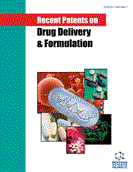Abstract
Background: Non-steroidal anti-inflammatory drugs are most commonly used in the management of ocular inflammations. These drugs have poorly aqueous solubility and weakly acidic nature. They interact with cationic quaternary ammonium compound benzalkonium chloride, used as a preservative in ophthalmic formulations, to form insoluble complexes. To overcome this incompatibility solubilizers like polysorbate 80, lysine salts, tocopheryl polyethylene glycol succinate etc. are used which are quite irritating and affect the corneal integrity.
Objective: The objective of the present study is to formulate nonirritating, compatible, microbiologically stable ophthalmic formulation with good corneal permeation characteristics. The interaction between diclofenac sodium or ibuprofen with benzalkonium chloride was optimized using a central composite experimental design to prepare nanosuspensions by nanoprecipitation.
Methods: The optimized batches of nanosuspensions were evaluated for ex vivo corneal permeation study, preservative challenge test and physical stability. The optimal concentrations of benzalkonium chloride for diclofenac sodium (0.1%, w/v) and ibuprofen (0.1% w/v) nanosuspensions were determined to be 0.002%(w/v), which had a respective average particle size of 440 nm and 331 nm, respectively. The nanosuspensions of diclofenac sodium and ibuprofen provided 1.6 and 2.1- fold higher ex vivo corneal permeation than their respective conventional aqueous solution dosage forms. Further, the concentration of benzalkonium chloride used in the formulations showed adequate preservative efficacy.
Results: The optimized nanosuspension formulations of diclofenac and ibuprofen were found to be physically stable and microbiologically safe with greater corneal penetration than the conventional solution dosage forms.
Keywords: Benzalkonium chloride, diclofenac, ibuprofen, nanosuspension, ophthalmic, corneal permeation.
[http://dx.doi.org/10.5497/wjp.v2.i2.47] [PMID: 25590022]
[PMID: 27373107]
[http://dx.doi.org/10.1016/j.preteyeres.2010.03.001] [PMID: 20302969]
[http://dx.doi.org/10.1111/j.1755-3768.2008.01250.x] [PMID: 18537937]
[http://dx.doi.org/10.2147/OPTH.S1067] [PMID: 19668727]
[http://dx.doi.org/10.1159/000068563] [PMID: 12592044]
[http://dx.doi.org/10.1208/s12248-008-9024-9] [PMID: 18437583]
[http://dx.doi.org/10.3109/02652048.2010.523794] [PMID: 21171815]
[http://dx.doi.org/10.1089/jop.2008.0140] [PMID: 19857103]
[http://dx.doi.org/10.1248/yakushi.126.1369] [PMID: 17139162]
[http://dx.doi.org/10.1002/jps.2600830928] [PMID: 7830253]
[http://dx.doi.org/10.1081/DDC-52058]
[http://dx.doi.org/10.1016/S0161-6420(01)00930-7] [PMID: 11825822]
[http://dx.doi.org/10.1016/S0142-9612(02)00080-7] [PMID: 12102196]
[http://dx.doi.org/10.1016/S0378-5173(00)00508-1] [PMID: 11084241]
[http://dx.doi.org/10.1159/000065608] [PMID: 12381895]
[http://dx.doi.org/10.4103/0975-7406.84459] [PMID: 21966165]
[http://dx.doi.org/10.1039/C5RA11702J]
[http://dx.doi.org/10.2147/IJN.S160714] [PMID: 30154656]
 19
19
















